Shigeru Ban, architect of sublime cardboard buildings, creates a permanent legacy
At the end of his lecture at his alma mater, Cooper Union’s School of Architecture in New York on June 16, Japanese architect Shigeru Ban asked: “What is the difference between temporary architecture and permanent architecture?” No architect is more qualified to explore that question.
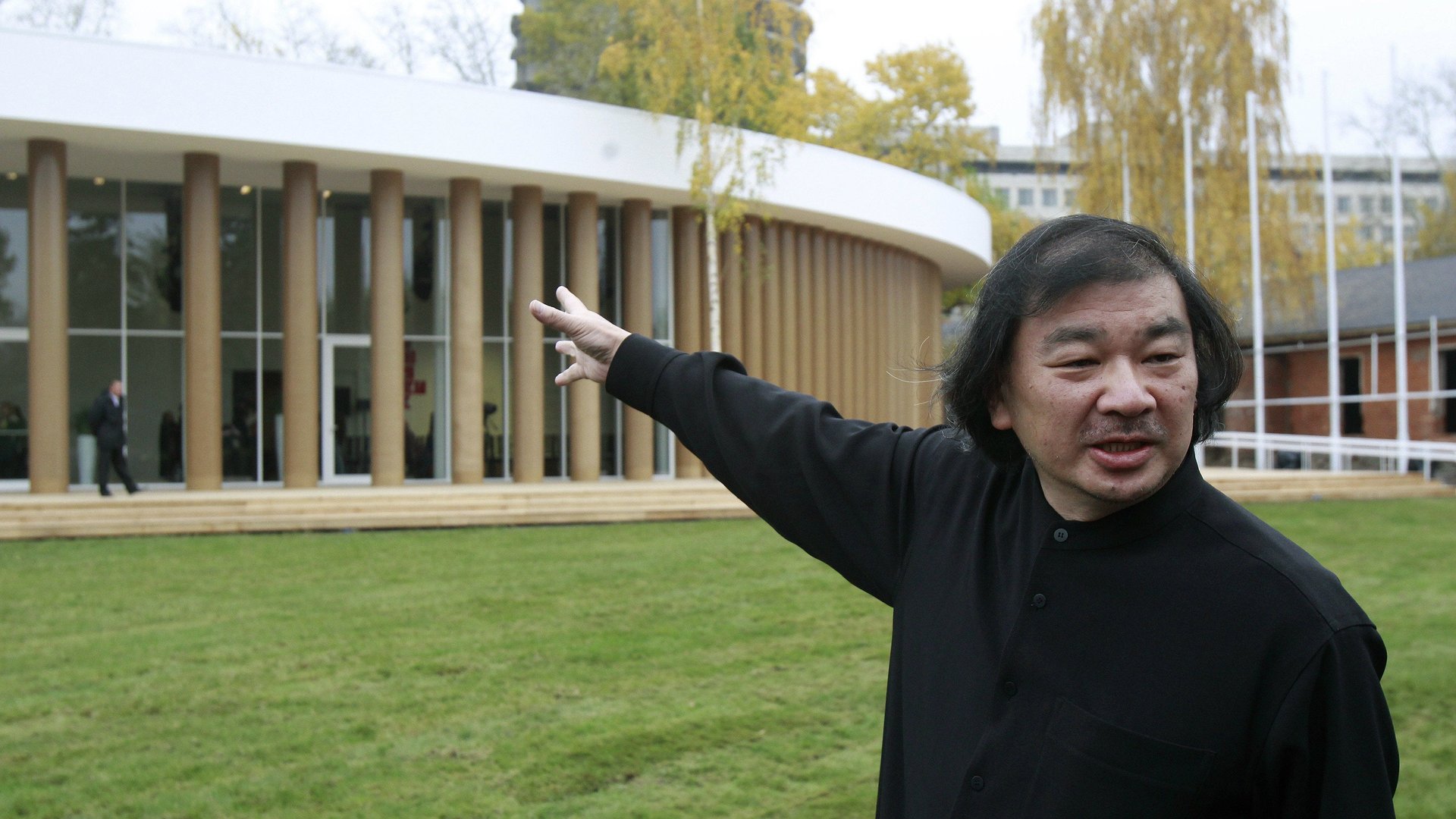

At the end of his lecture at his alma mater, Cooper Union’s School of Architecture in New York on June 16, Japanese architect Shigeru Ban asked: “What is the difference between temporary architecture and permanent architecture?” No architect is more qualified to explore that question.
“Temporary” architecture, in disaster zones, is Ban’s calling card. For over 20 years, the 2014 winner of the Pritzker Prize, architecture’s Nobel, has best been known for his well-publicized humanitarian work. From Rwanda to Japan to Nepal, he has turned cheap, locally-sourced objects—sometimes even debris—into disaster-relief housing that “house both the body and spirit,” as Architectural League president Billie Tsien put it, as she introduced Ban to the audience in New York.
Cardboard tubes, beer crates, containers and cloth
Perhaps more than any architect in his generation, Ban, 57, best exemplifies the maxim, “it’s not what you use that matters, but how you use it.” From churches made of paper tubes, to a nomadic museum constructed from shipping containers, Ban is a bricoleur, and a Macgyver-level improviser with building materials.
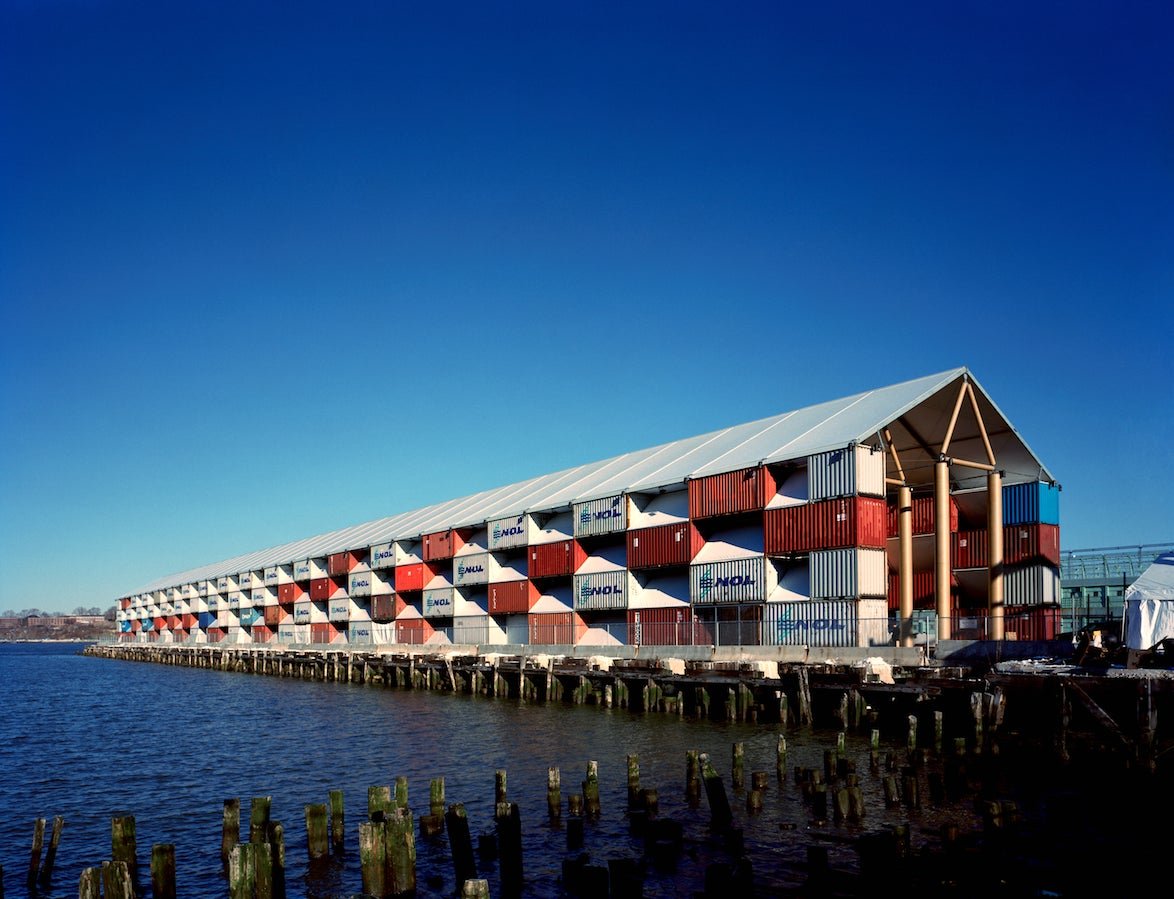
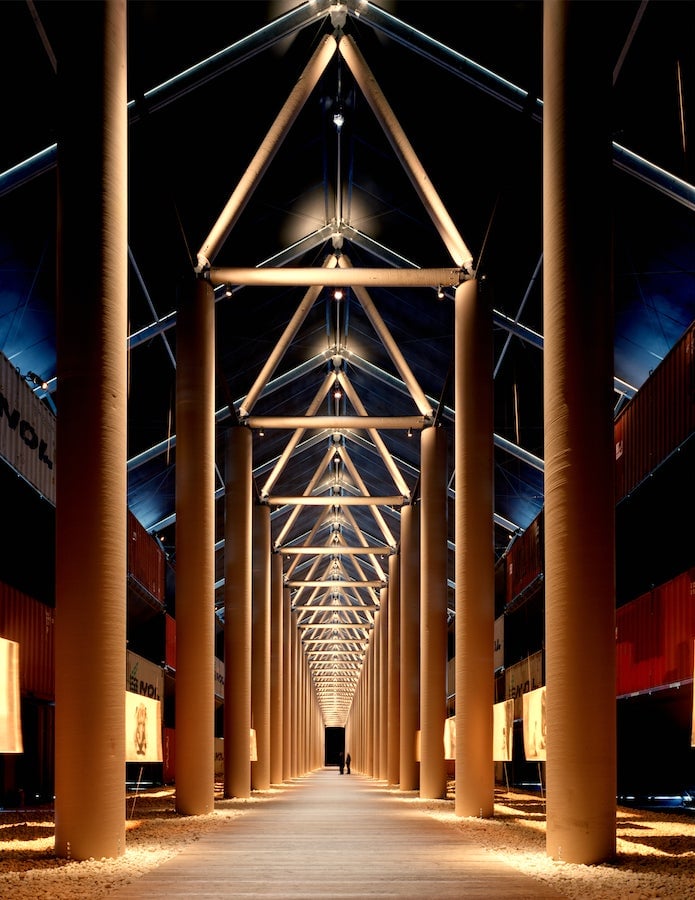
In 1995, after the Great Hanshin-Awaji earthquake in Kobe left 310,000 people homeless, Ban devised the first “Paper Log House,” using cardboard tubes as walls and beer crates weighed down by sand bags as foundations. This would form the prototype for cheap, comfortable, and beautiful disaster-relief buildings that Ban deployed in India, Turkey, and the Philippines.
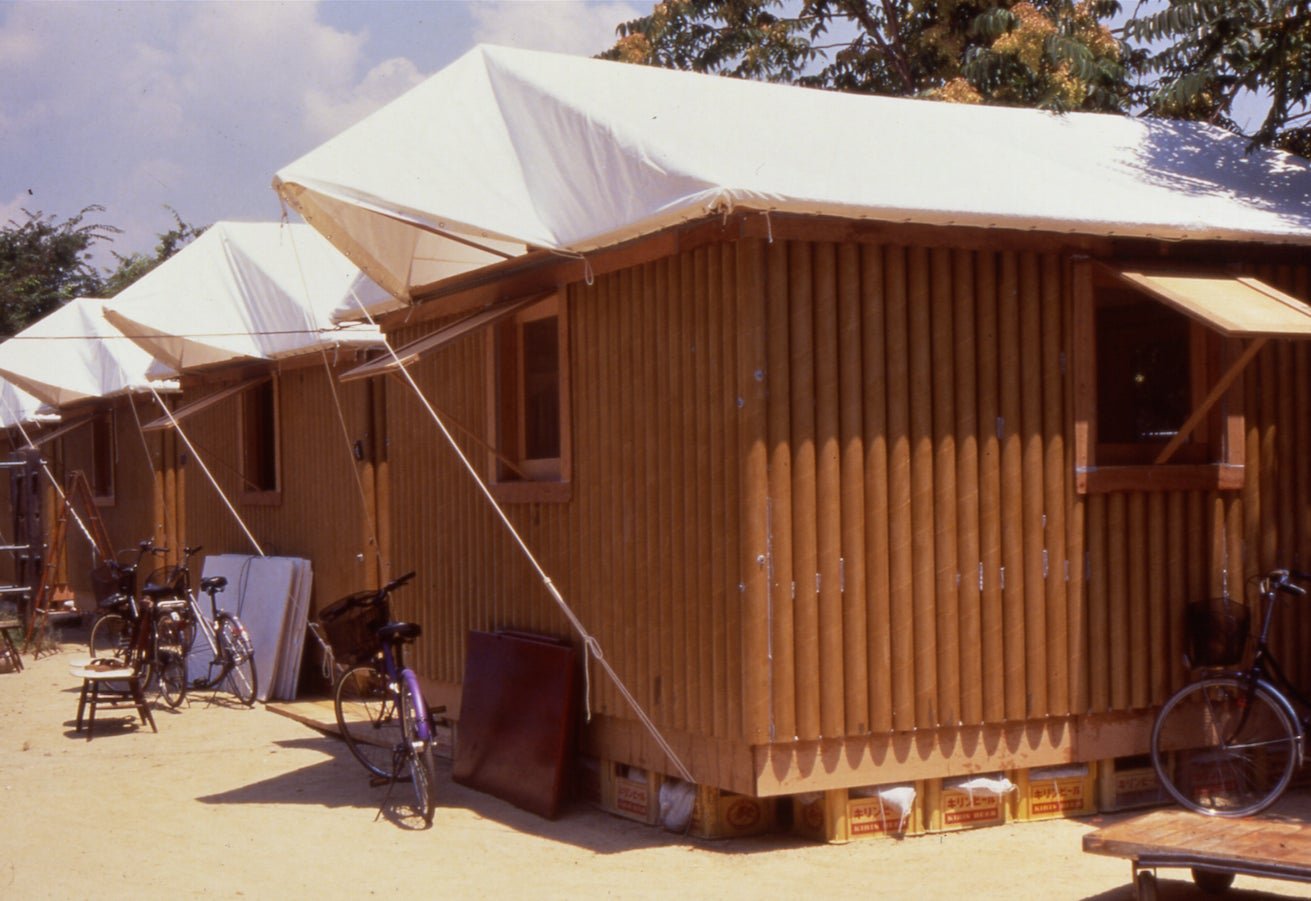
In difficult, resource-poor environments, Ban collaborates with the local universities, and engages students to rebuild structures for their own communities, giving them a hands-on lesson in the architect’s potential to better his situation.
Beauty, privacy as basic needs
Aesthetics is a primary concern for Ban—not despite, but especially in humanitarian scenarios. He believes that beauty is a basic need, an aspect of a person’s dignity. Erecting beautiful, if simple, structures can ensure that a refugee camp is not labeled a slum. So, when examining available materials in Kobe, he fussed about the color of the beer crates, choosing Asahi’s more neutral plastic bins over Kirin’s glaring red crates.
But he knows there are limits. “In the Philippines, the beer company San Miguel [which uses pleasing pine green crates] was so difficult to deal with,” Ban says. “So we went with the red Coca-Cola crates.” They didn’t go with his original plan, but that was okay. People who lost everything in Typhoon Haiyan needed shelter, fast.
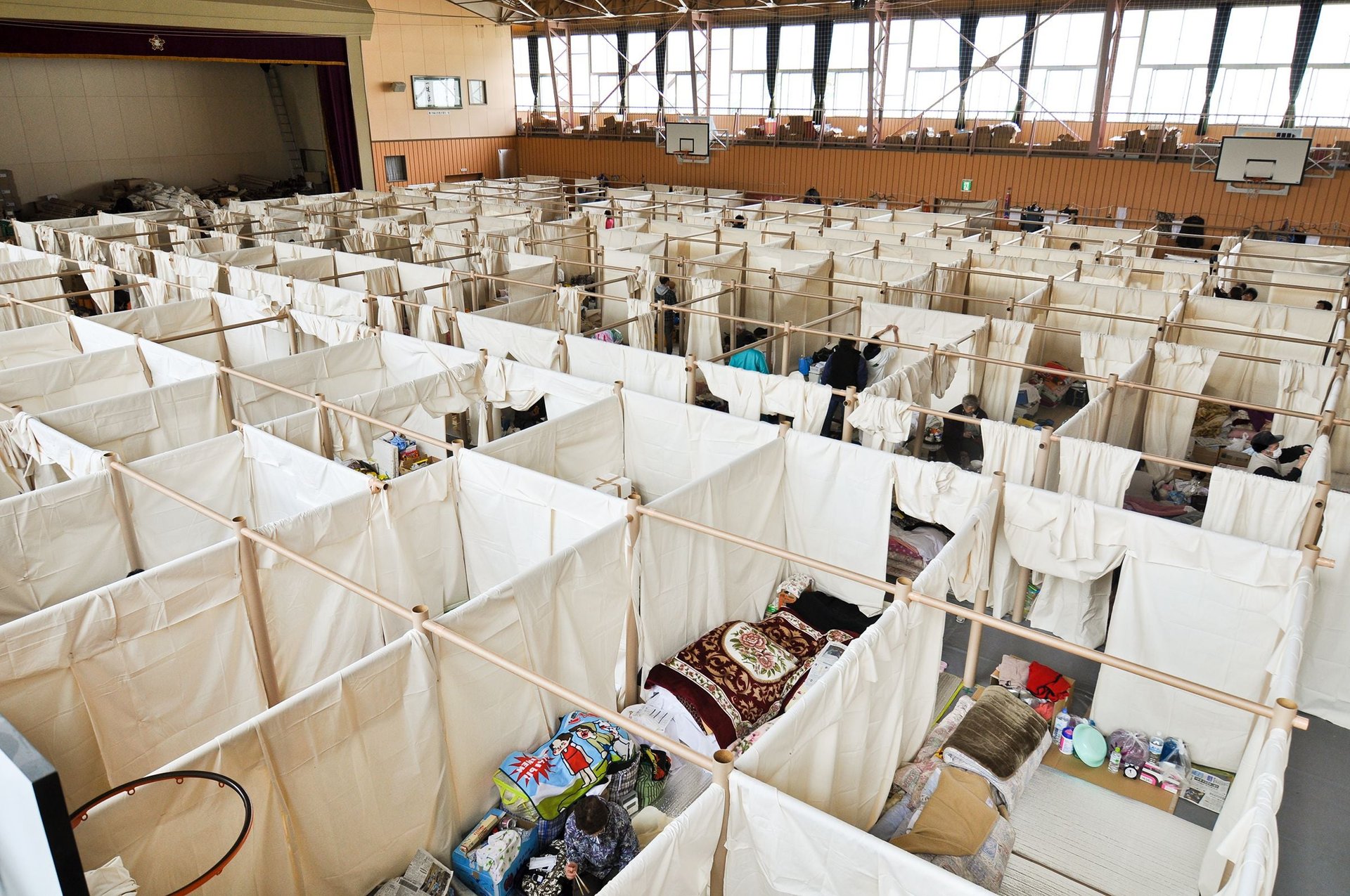
Perhaps Ban’s most poetic intervention came from his outrage over refugees’ living conditions after the 2011 tsunami in Japan. “They were not thinking about privacy. It was not on their list of priorities,” Ban told Boston Review writer Stephan Phelan, referring to the government’s effort to cram evacuees in classrooms and gymnasiums. “But of course [privacy] is a basic right of human beings, and especially important if they are suffering.” Ban used paper tubes, canvas cloth, and pins, to erect instant walls, or “paper partitions,” within a couple of hours.
Some critics have accused Ban of making temporary dwellings too beautiful, inadvertently creating a disparity in evacuation camps. In Onagawa, Japan, families have been slow to move out of the cheerful, pastel-painted housing units made from stacked shipping containers—a pop-up shelter community built in a baseball field after the 2011 earthquake.
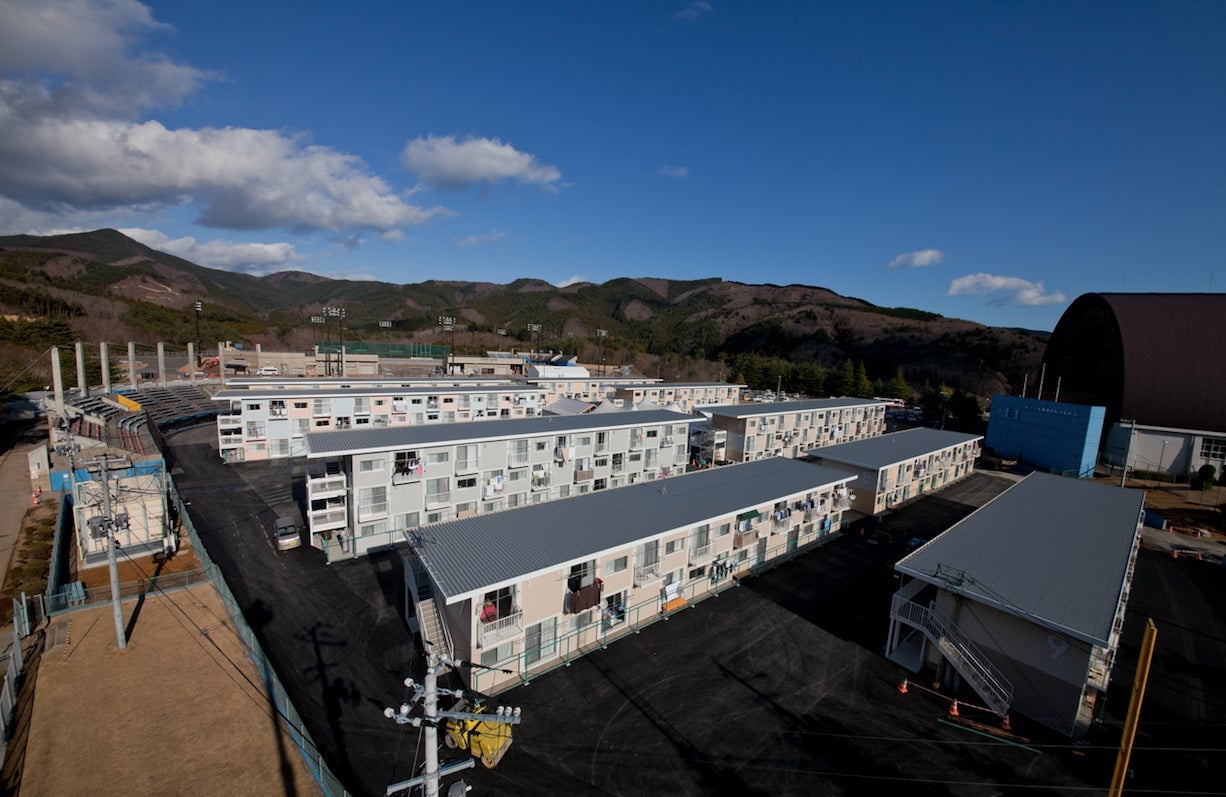
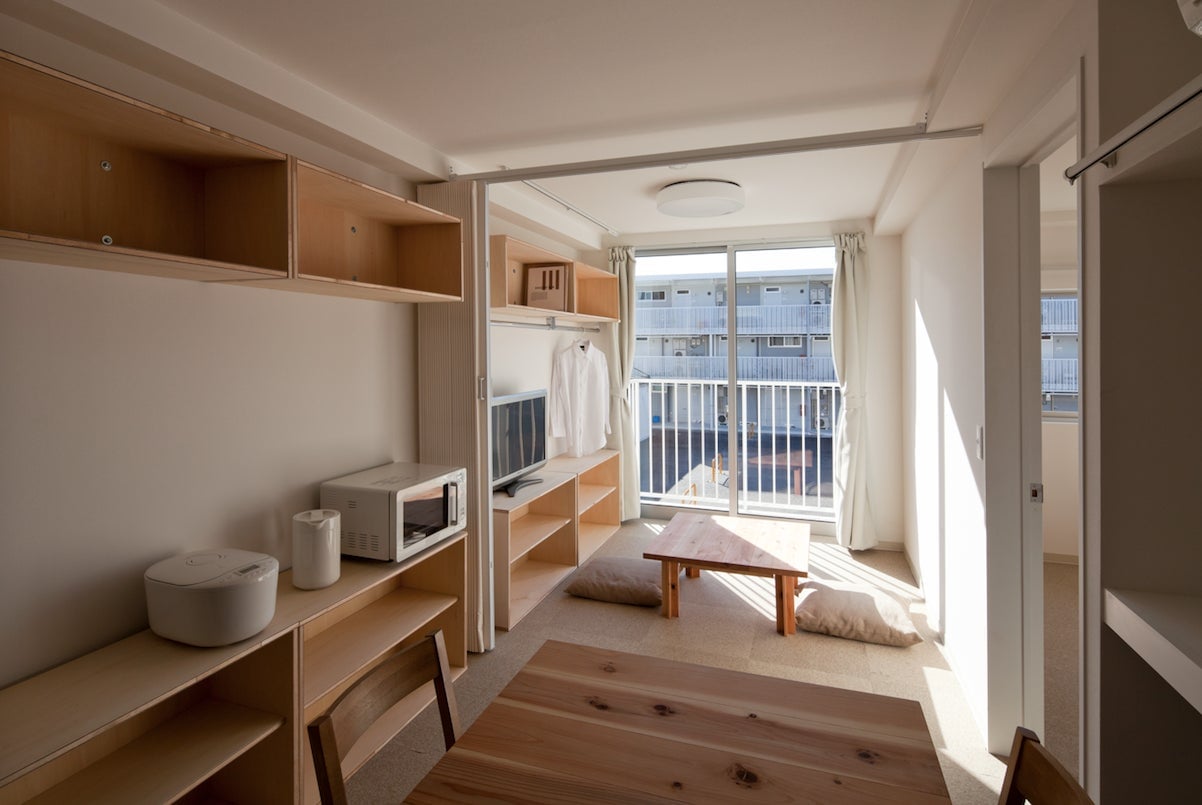
Places to gather and heal
It’s not all about housing. Ban argues that it can be equally important to rebuild places of gathering, to lift the spirit. In L’Aquila, Italy, he designed a temporary 230-seat “Paper Concert Hall” after a deadly 2009 earthquake damaged the city, known for its music scene. He used the same sturdy cardboard pillar construction, and built the walls of the performance hall with sandbags—concealing their ugliness with vivid red drapes.
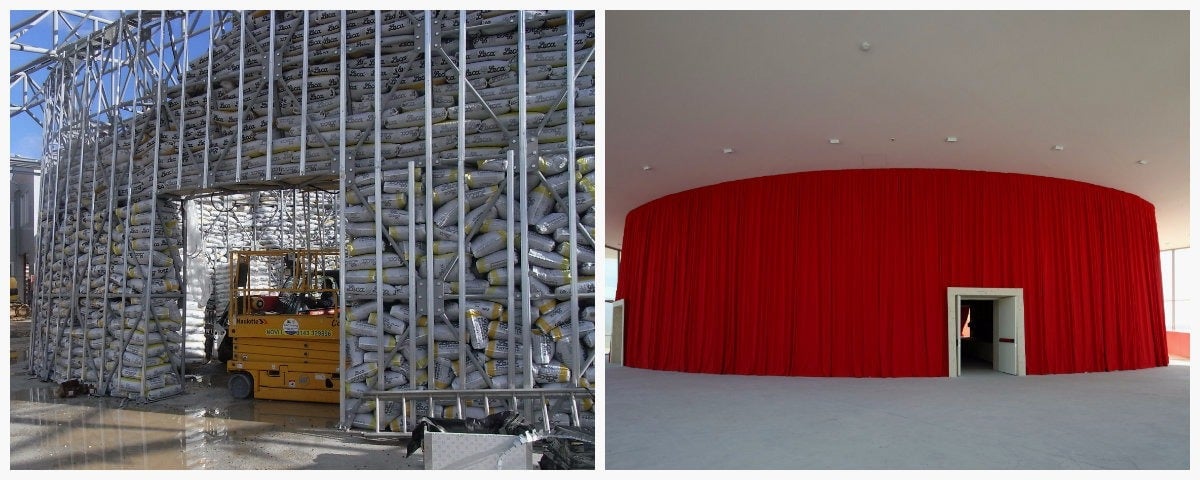
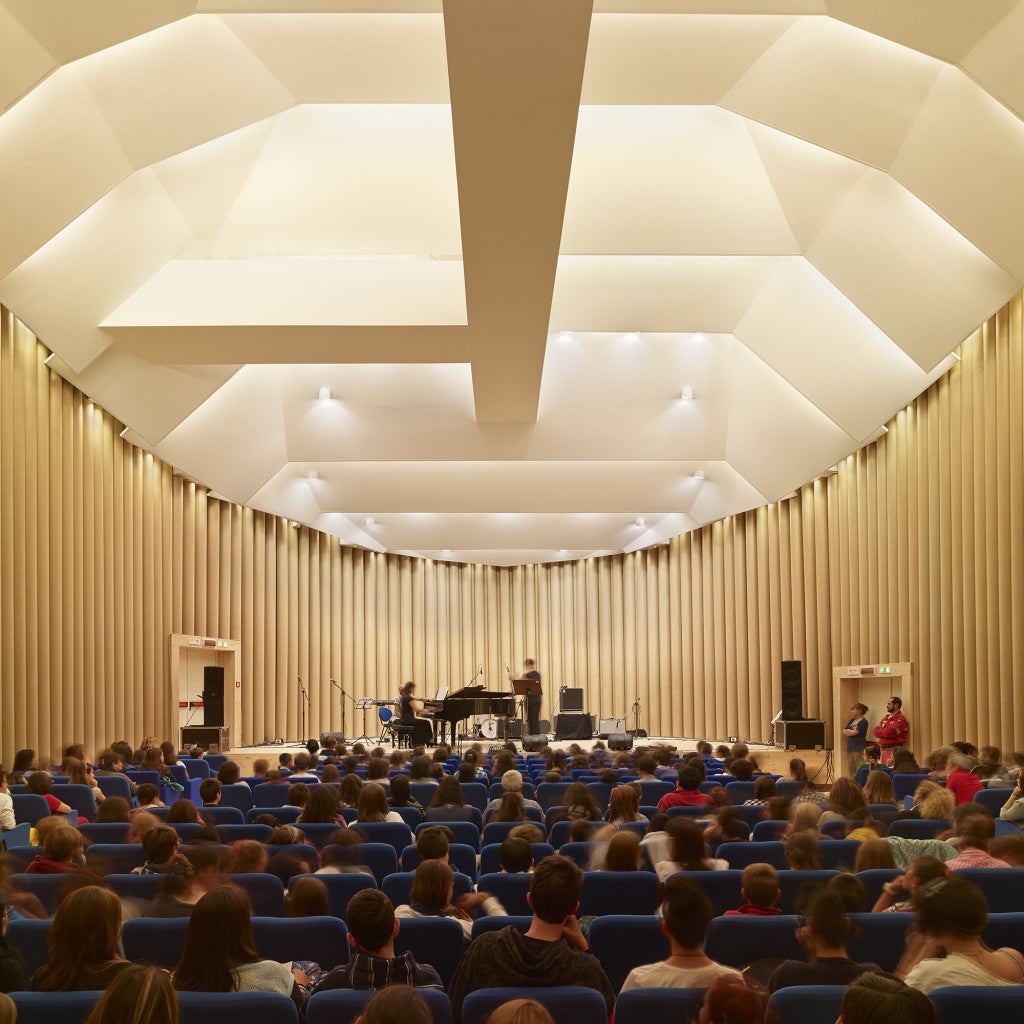
In Christchurch, New Zealand, Ban designed a “Cardboard Cathedral,” a 700-seat transitional space, that functions as a place of worship, a community center, a concert hall, and a town center as the city recovers from the 2011 quake.
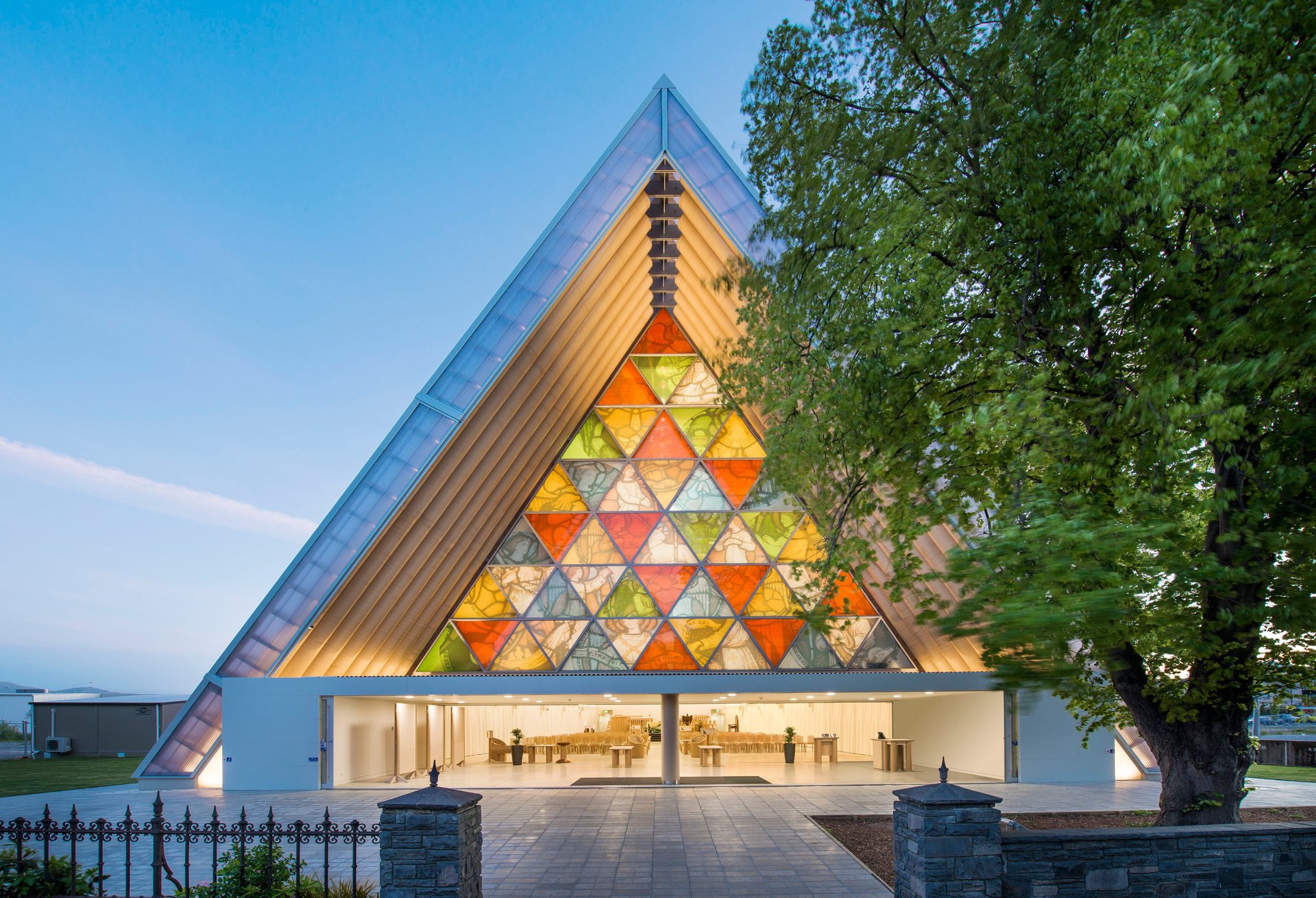
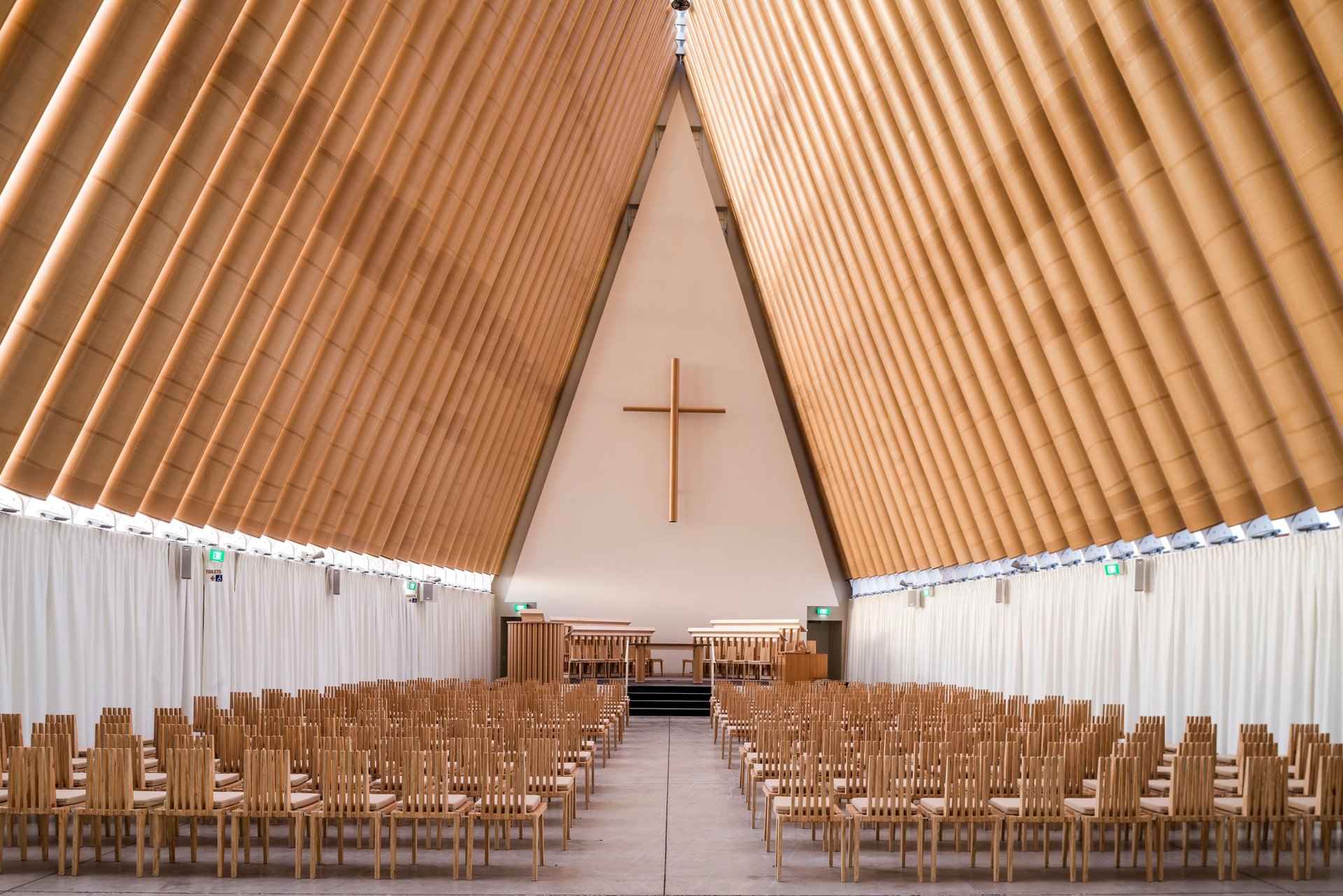
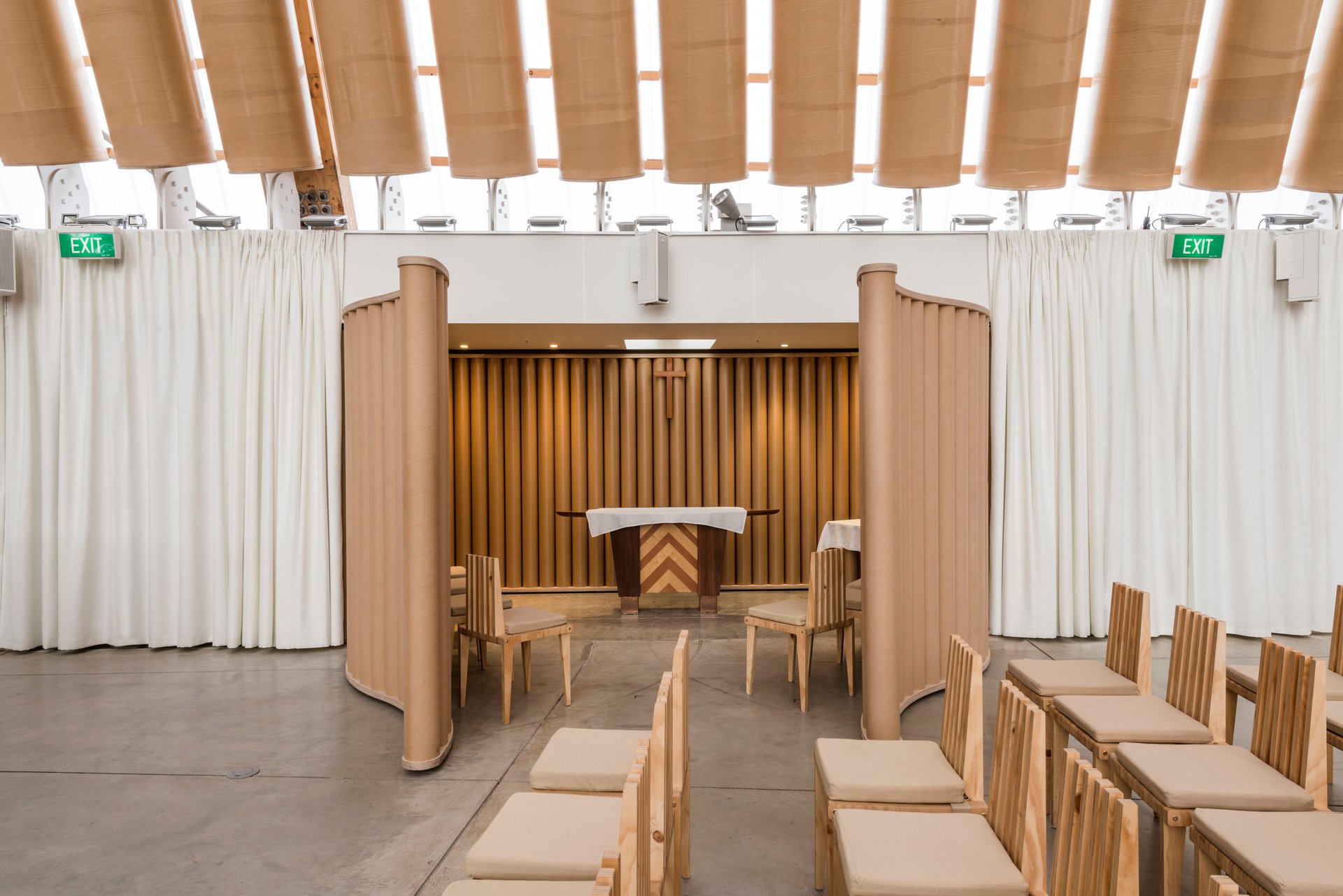
Permanent monuments
Many of Ban’s temporary structures remain in use years after the community has recovered from a disaster. In Kobe, his Paper Dome, aka the Takatori Catholic Church, remained in use for a decade. The structure has since been donated to a town in Taiwan, similarly ravaged by an earthquake, where it is now a permanent place of worship. An elementary school built from paper tubes in Chengdu, China built as a transitional facility after the 2008 Sichuan earthquake, is still in use, and has survived several earthquakes since without damage.
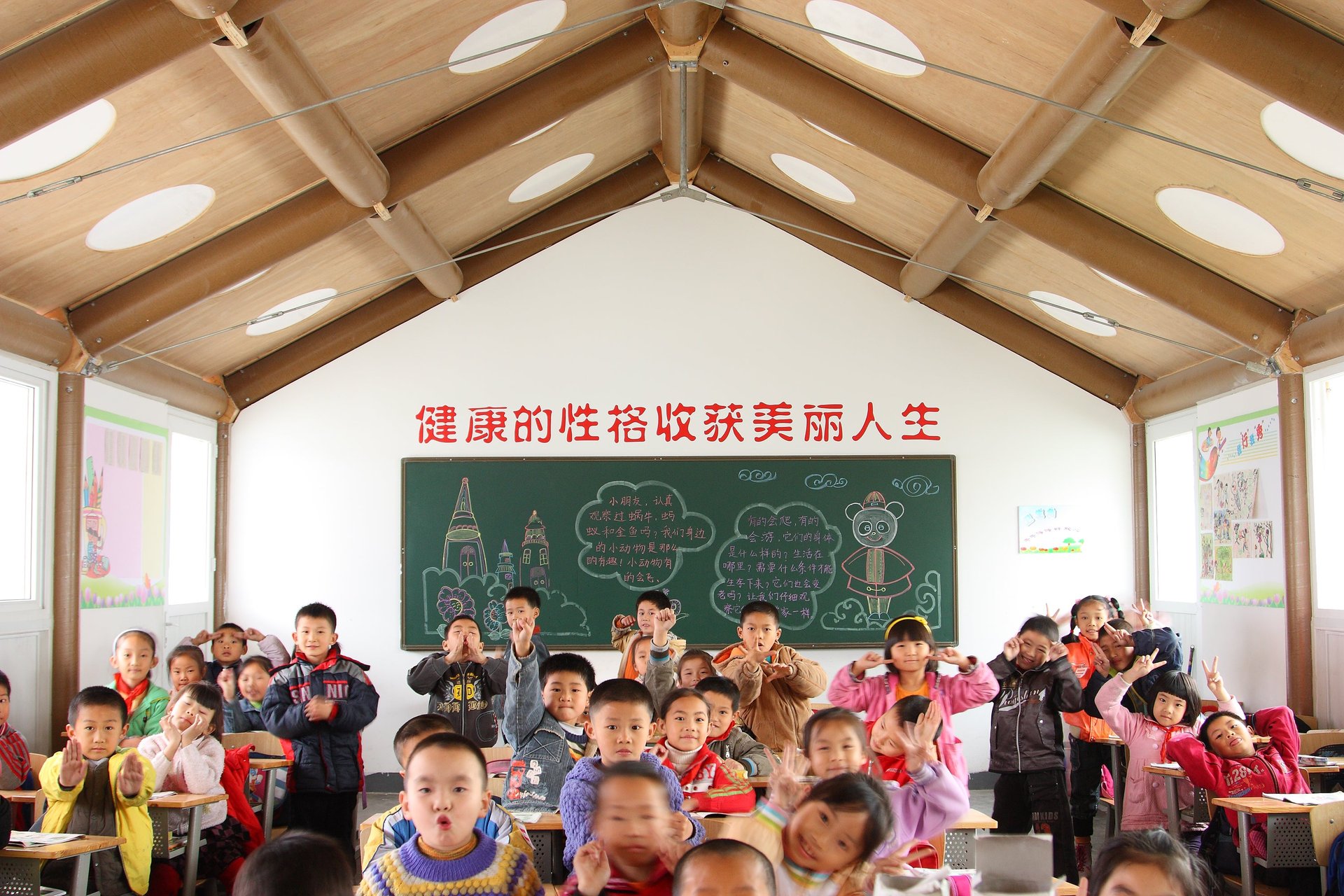
Aside from humanitarian projects, Ban also works on the usual mix of high-end condominiums, retail stores, and museums, maintaining offices in Tokyo, Paris, and New York. His harshest critics have characterized some of Ban’s work as boring, awkward, ephemeral, or even kooky. But Ban’s work, time and again, has proven to be the antidote to showy “object architecture,” which is how New York Times architecture critic Michael Kimmelman described buildings that look like they were drawn up in a studio, and parachuted in without consideration for place, history, or context. “Mr. Ban’s work points toward a timely and growing respect for what’s at hand,” writes Kimmelman.
In the end, the difference between permanent and temporary structures, concludes Ban, is love. That is not a word that one finds often in the usual parlance of architecture, notoriously replete with words like ”typologies” or “tectonics.” But it seems apt for the architect who has seen the face of true despair, and the emotional toll wrought by natural and man-made disasters. “Even if a building is made out of paper, if people love them, then they will become permanent,” Ban told his New York audience of students, fellow architects, and former teachers. “Concrete buildings built by developers only for profit can be demolished.” In the end, they’re all monuments, he said. The community decides what stays and what goes.
Humanitarian Architecture, a book about Ban’s disaster relief projects, including detailed plans for shelter kits adaptable to emergent scenarios, has been published by the Aspen Art Museum.